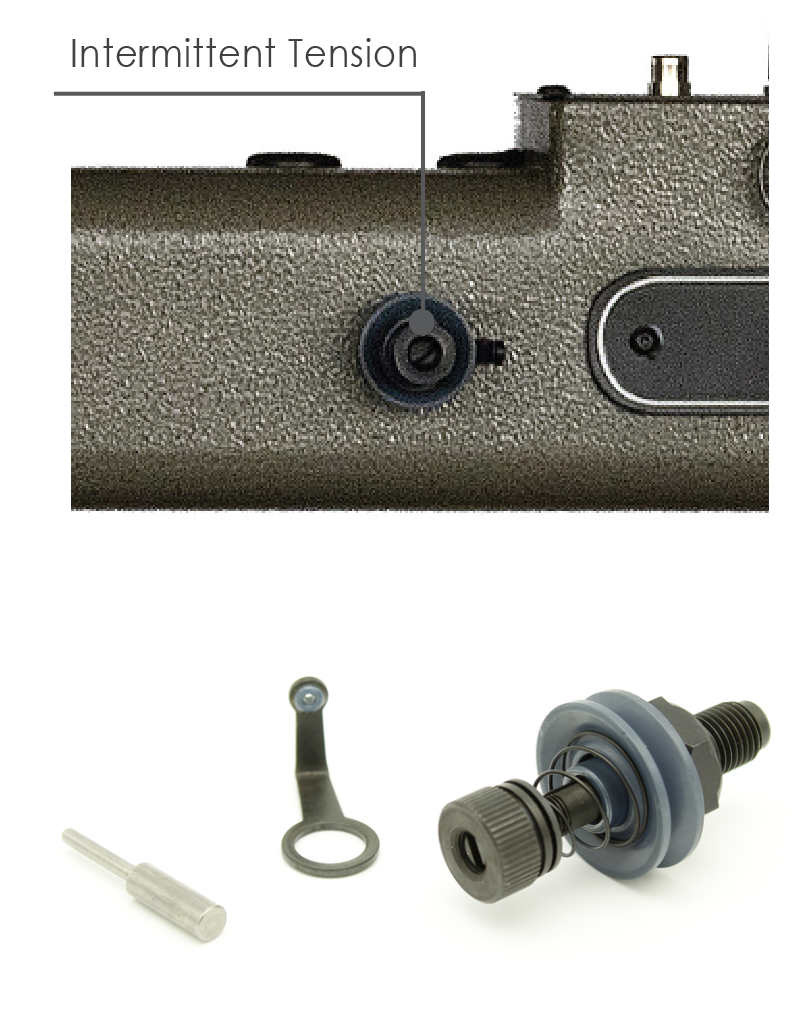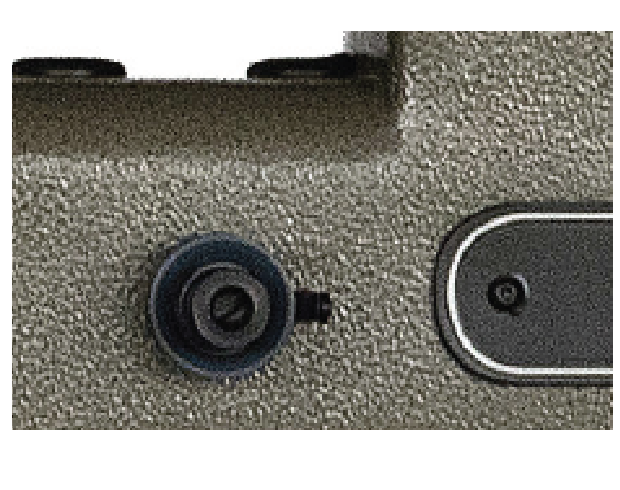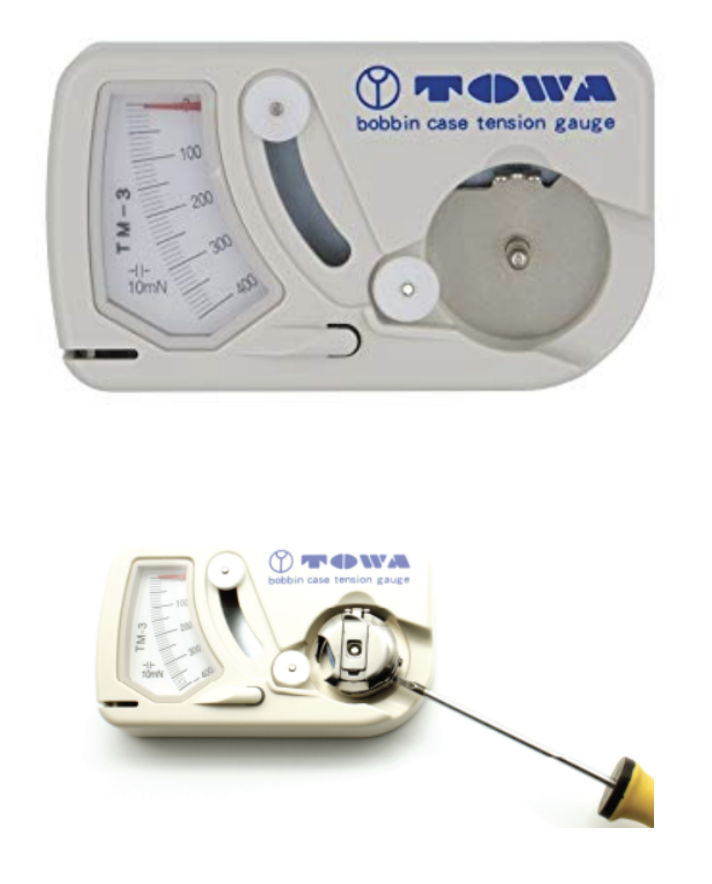Thread Tension
Adjusting the bobbin case or intermittent tension
Which tension should I adjust?
If the tension is poor on the back of the quilt - top thread loops, bobbin thread lying flat, eyelashes or stitches not embedding in the fabric - then tighten intermittent tension ½ turn at a time to “pull” the stitch (the bobbin and top thread connection) into the middle of the quilt
If tension is poor on top then check the bobbin case first. If it seems OK, loosen the intermittent tension ½ turn at a time until stitch balance is achieved.
Intermittent Tension
|
This intermittent tension device is used to add and remove tension to the top thread. The tension is needed to prevent slack in the thread as the take-up lever moves down. The take-up lever moves up to pull out any slack in the top thread as the stitch is completed. The intermittent tension consists of a thread guide just befodre it and two symmetrical discs. The thread runs between the two discs and the tension is adjusted by a knob which moves the discs closer or farther apart to create or reduce tension on the thread. The intermittent tension is the tension adjustment device for the top thread. Tightening or loosening the pressure between the two discs adjusts the tension. |
 |
Intermittent tension adjustments might be needed on every quilt combination you do because the thread, fabric, batting and backing all affect the stitch quality.
When to Change the Intermittent Thread Tension
If the tension is poor on the back of the quilt - top thread loops, bobbin thread lying flat, eyelashes or stitches not embedding in the fabric - then tighten intermittent tension ½ turn at a time to “pull” the stitch (the bobbin and top thread connection) into the middle of the quilt.
To set the Intermittent Tension:
Start with the Intermittent Tension set at the baseline by turning the knob until it is flush with the inside threaded shaft.
Turn the knob a half turn to the right (clockwise) to tighten and the left (counter clockwise) to loosen. When adjusting the tension, always turn the intermittent tension knob at least half a turn at a time. It is a coarse adjustment and less than a half of a turn will not considerably change the tension.
Tip: If the tension is too tight or too loose, the thread will quickly work its way out of the disks. Be sure the thread stays nestled between the two tension disks. If it slips out, the quilt will have poor tension.
Adjusting the Bobbin Tension
The bobbin tension should be adjusted at the start of each quilt and/or whenever you change from one type of thread to another. If tension is poor on top then check the bobbin case first. If it seems OK, loosen the intermittent tension ½ turn at a time until stitch balance is achieved.
Gammill recommends the use of a TOWA Bobbin Tension Gauge to ensure consistently great tension of the bobbin. It should read between 180 and 220 on the 22, 26, and 30-inch size machine heads.
An 18-inch head needs 250 to 300.
Note: A bouncing needle on the gauge is an alert that there is a problem with the bobbin or the bobbin case.
To adjust the bobbin tension, there are two screws located on the side of the bobbin case. The largest one is used to adjust the bobbin thread tension. Generally, only slight adjustments to the left (loosen tension) or to the right (tighten tension) are needed to adjust bobbin tension.
